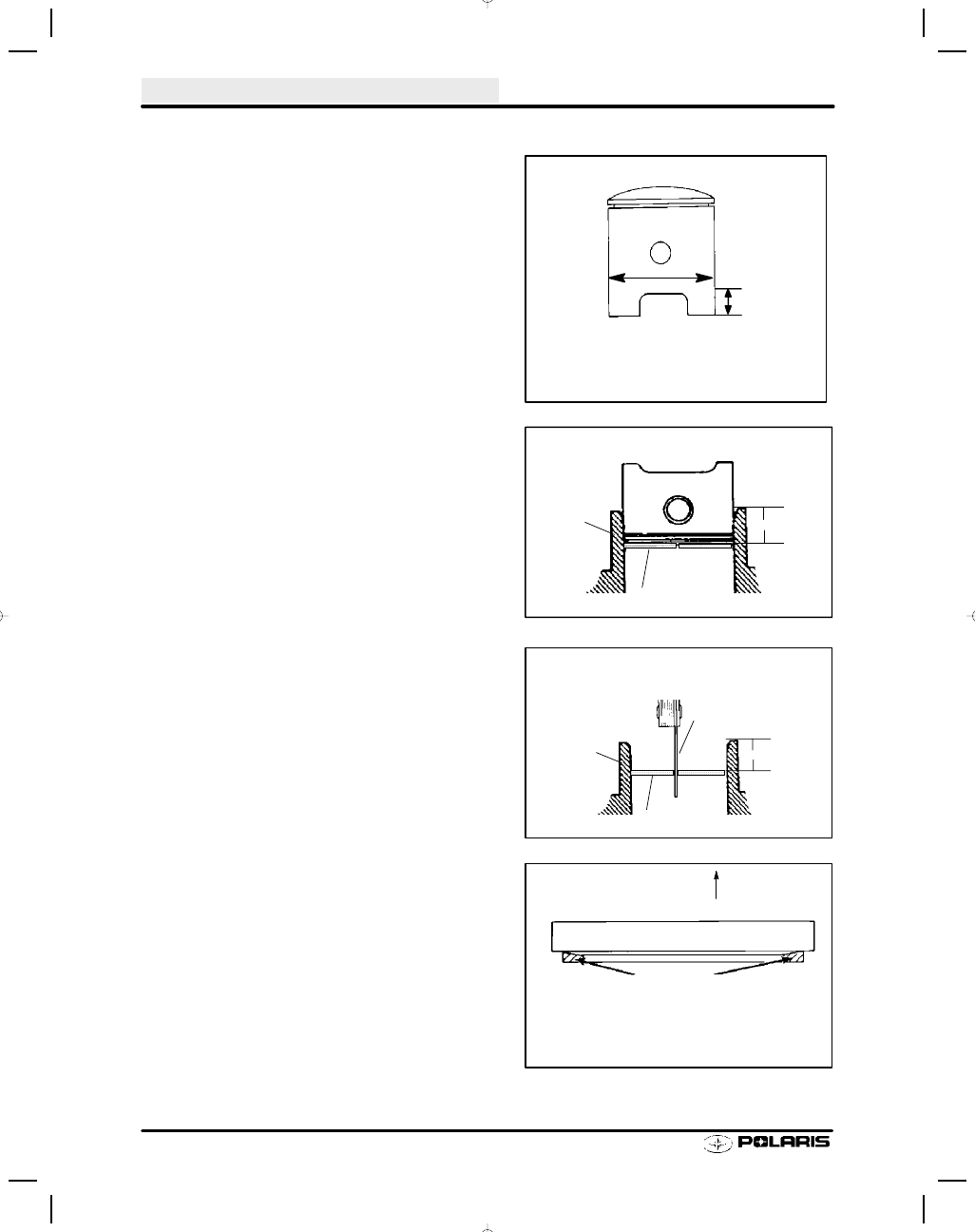Snowmobile Polaris PRO X (2003 year). Instruction - part 22

ENGINE
2.56
Piston Inspection/Measurement
1.
Check piston for scoring or cracks in piston crown or
pin area. Excessive carbon buildup below the ring
lands is an indication of piston, ring or cylinder wear.
2.
Measure piston outside diameter at a point 10 mm
(3/8
s) up from the bottom of the skirt at a 90q angle
to the direction of the piston pin (domestic engines).
For Fuji engines, measure 1/2
s (12.7mm) up from
the bottom of the piston skirt.
Record the
measurement for each piston.
NOTE: The piston must be measured at this point to
provide accurate piston-to-cylinder clearance measure-
ment.
3.
Subtract this measurement from the minimum
cylinder measurement recorded previously.
If
clearance exceeds the service limit, the cylinder
should be re-bored and new pistons and rings
installed.
Piston Ring Installed Gap
1.
Position ring 1/2I (1.3 cm.) from the top of the
cylinder using the piston to push it squarely into
place. Measure installed gap with a feeler gauge at
both the top and bottom of the cylinder.
NOTE: A difference in end gap indicates cylinder taper.
The cylinder should be measured for excessive taper
and out of round. Replace rings if the installed end gap
exceeds the service limit.
NOTE: Always check piston ring installed gap after re-
boring a cylinder or when installing new rings.
90
q to pin
FUJI ENGINES - Measure 1/2
s
(12.7mm) up from bottom of skirt
DOMESTIC ENGINES - Measure
3/8
s (10.0mm) up from bottom of skirt
1/2
s (1.3cm.)
Cylinder
Piston Ring
Cylinder
Piston Ring
Feeler Gauge
1/2
s (1.3cm.)
Straight Edge
Piston Ring Cutaway
Up
Keystone Piston Ring